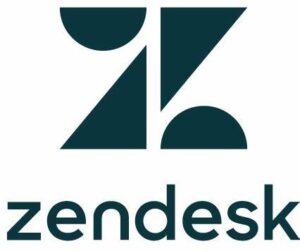Introduction
When it comes to design tools, Figma and Adobe XD have emerged as two of the leading contenders in the market. With their powerful features and user-friendly interfaces, these tools have become indispensable for designers. However, choosing between the two can be a daunting task. To help you make an informed decision, this blog post presents a comprehensive comparative analysis of Figma and Adobe XD. We will delve into the key features, pricing, and usability of both tools to determine which one reigns supreme in the realm of design. So, if you’re ready to unveil the best tool for designers, keep reading!

Understanding the importance of design tools in the industry
Design tools play a crucial role in the design industry. They enable designers to bring their creative visions to life, streamline their workflow, and collaborate effectively with clients and team members. The right design tool can significantly enhance productivity and efficiency, allowing designers to focus more on the design itself rather than the technical aspects.
In today’s highly competitive market, it is essential for designers to stay ahead of the game and deliver visually appealing and user-friendly designs. Design tools such as Figma and Adobe XD equip designers with the necessary tools and features to create stunning interfaces, prototypes, and animations.
Understanding the significance of design tools is the first step in choosing the best tool for your specific needs. In the following sections, we will dive deep into the features, pricing, and usability of Figma and Adobe XD, to help you make an informed decision and select the tool that aligns perfectly with your design objectives and preferences. So, let’s explore the key aspects that make these tools indispensable for designers in today’s rapidly evolving design landscape.
Introducing Figma

Figma is a cloud-based design tool that has gained popularity among designers for its collaborative features and seamless cross-platform compatibility. With Figma, designers can work on projects in real-time, allowing multiple team members to edit and comment on designs simultaneously. This feature proves to be highly beneficial, especially for remote teams or those working on different time zones.
Moreover, Figma’s user-friendly interface and intuitive design make it a favorite among both beginner and experienced designers. Its drag-and-drop functionality and familiar design elements make it easy to navigate and create stunning designs effortlessly.
In addition to its collaboration capabilities, Figma offers a wide range of powerful design features such as vector editing, prototyping, and design component libraries. These features empower designers to create and iterate on their designs quickly, streamlining their workflow and saving valuable time.
Whether you are designing interfaces, wireframes, or high-fidelity prototypes, Figma provides a versatile and comprehensive set of tools to bring your design ideas to life. In the next section, we will delve deeper into the features and benefits of Figma, allowing you to gauge the tool’s suitability for your design projects. Stay tuned!
Introducing Adobe XD

Adobe XD is another popular design tool that offers a range of powerful features for designers. Similar to Figma, Adobe XD also provides a collaborative platform for teams to work together seamlessly. Designers can share their projects with team members, gather feedback, and make changes in real-time.
One notable advantage of Adobe XD is its integration with other Adobe Creative Cloud apps. This allows designers to easily import and export assets between different Adobe apps, enhancing their workflow efficiency. Additionally, Adobe XD offers a robust set of design and prototyping tools, including vector editing, responsive design features, and interactive animations.
With its intuitive interface and smooth user experience, Adobe XD has been widely embraced by designers of all levels. Its efficient workflow and easy-to-use tools enable designers to create visually stunning and interactive designs effortlessly.
In the following section, we will explore the various features and benefits of Adobe XD in more detail, helping you make an informed decision about which design tool best suits your needs.
Comparative analysis: Features and functionality
When it comes to comparing Figma and Adobe XD, it’s essential to examine the features and functionality of both tools. By understanding the capabilities of each platform, designers can make an informed decision about which one best suits their needs.
Both Figma and Adobe XD offer robust design and prototyping tools. Figma’s collaborative platform allows teams to work together seamlessly, while Adobe XD’s integration with other Adobe Creative Cloud apps enhances workflow efficiency. However, it’s important to note that Adobe XD’s responsive design features and interactive animations set it apart from Figma.
In the next section, we will delve deeper into the features and functionality of these two tools, conducting a comprehensive comparative analysis. By considering factors such as usability, flexibility, and performance, we aim to provide you with a clear understanding of which design tool stands out as the best choice for designers. Stay tuned for an in-depth exploration of the features and benefits of Figma and Adobe XD.
User experience and collaboration capabilities
User experience and collaboration capabilities play a vital role in determining the best design tool for designers. Figma excels in offering a seamless collaborative platform, allowing multiple team members to work on a project simultaneously. Its real-time collaboration features enable designers to provide instant feedback and make changes in real-time, fostering effective teamwork. On the other hand, Adobe XD offers a smooth integration with other Adobe Creative Cloud apps, streamlining the design process and enhancing workflow efficiency.
Both Figma and Adobe XD prioritize user-friendly interfaces, making it easy for designers to navigate and utilize the tools effectively. Figma’s intuitive interface allows for quick learning and adapts well to designers’ needs. Adobe XD, with its familiar Adobe design interface, ensures a smooth transition for those already familiar with other Adobe apps.
In the next section, we will further explore the usability, flexibility, and performance of Figma and Adobe XD, helping you make an informed decision about which tool best suits your design needs. Stay tuned to discover the finer details of these design tools and their impact on your creativity and productivity.
Pricing and accessibility
Pricing and accessibility are important considerations when choosing a design tool. Figma offers a free plan that allows designers to explore its features and capabilities, making it a popular choice for beginners or individual designers on a tight budget. For more advanced features and team collaboration, Figma’s paid plans are reasonably priced, providing excellent value for money.
On the other hand, Adobe XD is part of the Adobe Creative Cloud subscription, which includes other Adobe apps. While this provides access to a comprehensive suite of design tools, it also means a higher price point. However, for designers who are already using Adobe apps and require the seamless integration and synchronization they offer, the cost may be well worth it.
In the following section, we will delve deeper into the pricing models and accessibility options of Figma and Adobe XD, giving you a comprehensive understanding of the financial aspect of these tools. So, keep reading to discover which tool aligns best with your budget and accessibility preferences.
Conclusion: Determining the best tool for designers
In conclusion, both Figma and Adobe XD offer unique features and benefits that cater to different design needs and preferences. When it comes to pricing, Figma’s free plan and reasonably priced paid plans make it an attractive choice for beginners or individual designers on a budget. On the other hand, Adobe XD’s inclusion in the Adobe Creative Cloud subscription provides access to a comprehensive suite of design tools, albeit at a higher price point.
Ultimately, the best tool for designers depends on various factors such as individual requirements, team collaboration needs, and familiarity with existing design software. It is essential to consider the specific features, pricing models, and accessibility options of both Figma and Adobe XD before making a decision.


